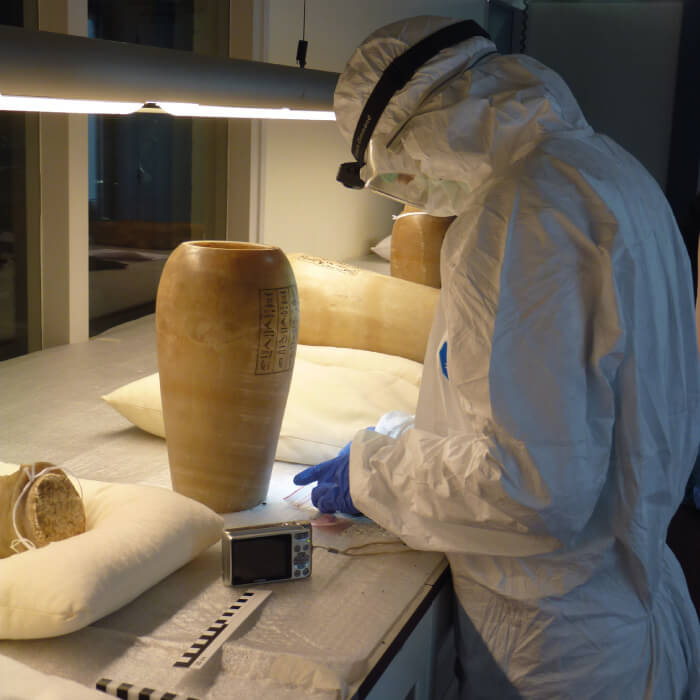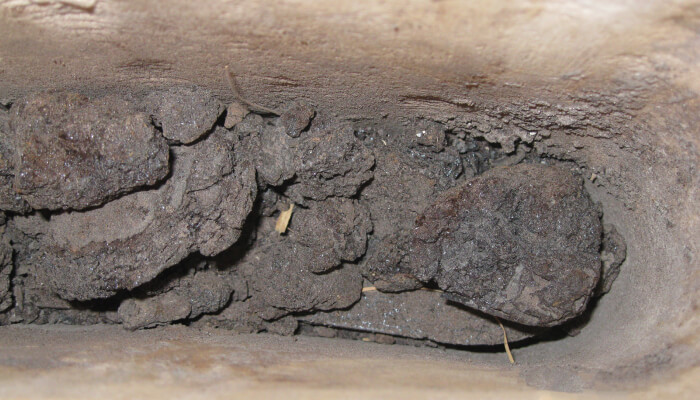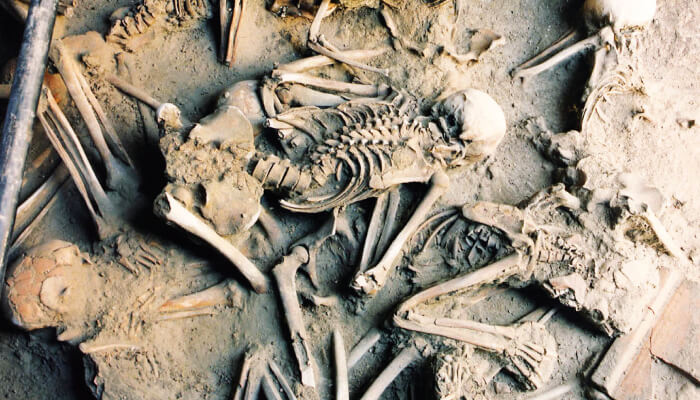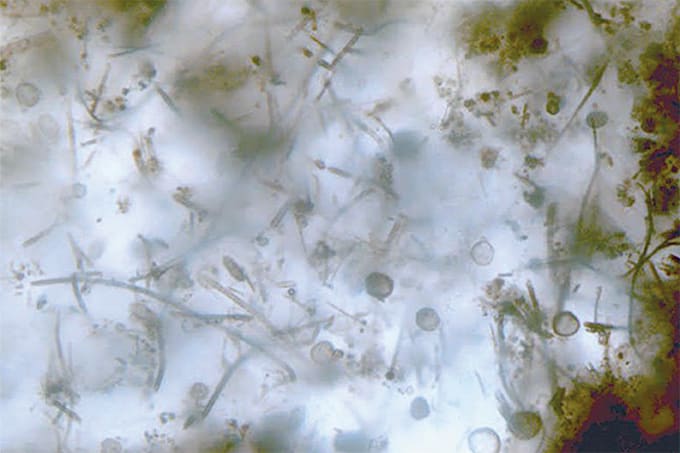The history of our planet is both fascinating and complex, and humans are gifted with the ability to form a picture of its past by piecing together the evidence left behind by our predecessors. The clues take many forms, from galleons resting on the ocean bed to citadels standing high in the mountains and timeless relics proudly displayed in museums. Perhaps more informative than any of these (or all of them combined), however, are the human remains scattered across the globe.
The remains of ancient humans have ignited our imaginations for millennia, giving us a teasing taste of lives radically different to our own. Yet, it is only in the past century or so that we have developed the scientific means to delve deeper into the lives of our ancestors, from Neanderthals stalking their prey on the ancient planes of Europe to mass sacrifice atop the Aztec pyramids.
In honor of the ever-expanding role of analytical chemistry in archeological contexts, we decided to dig into three studies that underscore the capabilities of today’s techniques – and shine a light on the researchers deciphering the stories of the dead.
Welcome to the world’s first (probably) scientifically sound séance...
Mummified remains stand the test of time – now chemists are looking to the canopic jars of ancient Egypt to find out why.
By Lana Brockbals, Department of Forensic Pharmacology and Toxicology, Zurich Institute of Forensic Medicine, University of Zurich, Zurich, Switzerland.
My PhD research at the Zurich Institute of Forensic Medicine focuses on mechanisms underlying the postmortem redistribution of centrally acting drugs; a phenomenon that leads to altered drug concentrations after death and poses difficulty for case interpretations in forensic toxicology. I apply this largely to determining the cause and manner of death for human remains admitted to our institute, where we conduct our studies with a time-span between death and medico-legal examination of three days or less. It wasn’t long, however, before I found myself studying remains somewhat older than this… A few thousand years older, in fact.
Canopic jars were used to hold the viscera (stomach, intestines, liver and lungs) of those deemed worthy of mummification in ancient Egypt and, in contrast to the mummies themselves, are very poorly studied. That’s one of the reasons why joining the “Canopic Jar Project,” alongside my PhD supervisor Thomas Kraemer, was so exciting – there are so many questions to be explored! The project is headed by Frank Rühli, Head of the Institute of Evolutionary Medicine at the University of Zurich, and aims to fill the knowledge void with significant genetic, medical, Egyptological and chemical evidence.
With this goal in mind, our lab adopted a metabolomics-like screening approach, using GC-high resolution MS, to analyze both canopic jar and mummy samples that date from approximately 2686 BCE to 395 AD through stylistic examination and radiocarbon dating (1). What made our approach novel was the use of an untargeted approach, which enabled the successful chemical differentiation of the mummy and canopic jar samples by statistical means. Many previous examinations had performed targeted examinations, which – in most cases – were based on our existing knowledge of mummies and thus excluded many potentially important chemical species. Our approach – on the other hand – utilized all the chemical information gathered through untargeted analysis to feed statistical tests (principal component analysis and partial least squares-discriminant analysis), allowing for the differentiation of mummy and canopic jar samples; this could support the classification of samples of unknown origin in the future, and could even be used to determine the age of samples.

There was initial concern, however, regarding the contents of the jars; at first glance, we were convinced there might not be an adequate amount of sample suitable for chemical characterization. Thankfully, our suspicions were dispelled when a parallel study used computerized tomography imaging to identify hyperdense structures with organ-specific morphology in a subset of the jars. We proceeded with a highly sensitive, universal method, using methanol as our extraction solvent and conducting a two-step derivatization of methoximation and silylation to ensure volatility among a large number of analytes. This approach enabled us to exercise a reproducible, and hence reliable, sample preparation protocol for these valuable samples.
Our approach identified numerous compounds detected in earlier studies, including terpenoids, fatty acids and beeswax. Interestingly, the beeswax we identified was associated mostly with samples dating from the late to third intermediate period, demonstrating a potential increase in the use of this material for embalming in the later dynasties of ancient Egypt. The terpenoids were then difficult to attribute to a specific botanical source because of their variable occurrence in numerous plant extracts, but we eventually suggested the presence of corniferous resin through the presence of cuparene (a constituent of resin, wood and wood extracts) and longiborneol (found in cedar, juniper and pine resins), along with additional plant materials.
We also detected various polycyclic aromatic hydrocarbons – organic compounds generated predominantly during the incomplete combustion of organic materials. The discovery of levoglucosenone and levoglucosan, both of which are formed by the pyrolysis of carbohydrates, such as starch and cellulose, suggest some thermal degradation of the bodies – a finding that may add strength to previous claims that melted resin was likely used to fill the chest and abdominal cavities during the mummification process; however, we also cannot discount the possibility that they might be external contaminants. In fact, all such studies face the significant challenge of distinguishing between endogenous chemicals and external contaminants that may have accumulated at any point over thousands of years.
We also successfully identified a number of substances that – to our knowledge – had not been discussed in previous literature on this topic, including aniseed constituents, salicylic acid, chamazuelene and jacobine. These compounds are all thought to have had medical significance in ancient Egypt; aniseed, for example, was cultivated at this time to alleviate pains and treat stomach disturbance, and the anti-inflammatory effects of salicylic acid (aspirin) are documented in medical documents of this culture, such as the Ebers papyrus (dated to circa 1550 BCE).
A single analytical system is unable to detect all possible exogenous and endogenous analytes, so further untargeted screening using methods like LC-high resolution MS represents a key next step for these studies. Such an approach will cover an even broader spectrum of substances, increasing our ability to identify novel chemical constituents of embalming fluids. Coupled with new analytical advances that lend themselves towards data of increasingly high resolution, we expect an increased ability to identify currently unknown peaks in the near future.
I will definitely continue analyzing human remains in my career – not only because it is currently the focus of my PhD, but also because this space poses so many important questions to analytical chemists. Providing answers to these questions will allow us to dig deeper into the history of crucial civilizations, such as the ancient Egyptians – while streamlining the future progress of our field as a whole.

The 79 AD Vesuvius eruption is perhaps the most famous volcanic event in history, but how exactly did its victims meet their ends?
By Pier Paolo Petrone, Laboratory of Human Osteobiology and Forensic Anthropology, Department of Advanced Biomedical Sciences, Azienda Ospedaliera Universitaria, University of Naples “Federico II,” Naples, Italy.
Vesuvius has erupted numerous times during its 20,000 years of volcanic activity – many have been explosive, and some absolutely catastrophic. The “Pumices of Avellino” (4000 BCE) completely devastated the Campanian plain, leading to the abandonment of the surrounding area for centuries, and the infamous Plinian eruption of 79 AD led to the complete devastation and burying of the ancient cities of Pompeii and Herculaneum (2).
The horror of the eruption engulfing Pompeii and Herculaneum is difficult to imagine; apocalyptic scenes of superheated gas blasting through the streets and ash raining from a sun-blocked sky. The death toll remains unknown to this day, but several hundred human bodies have been recovered by researchers. These bodies – along with the cities themselves – are perfectly preserved in calcified ash, providing a unique opportunity for us to study how these people were killed when Vesuvius erupted.
I capitalized on this opportunity in 2018, when I began the next phase of an ongoing study of skeletal remains from the beach of Herculaneum (3). Naturally, we started with bioarcheological and taphonomic features of the remains, and were astonished to find numerous skulls not only charred, but exploded – indicative of exposure to extreme temperatures. What’s more, bones demonstrated charring and fractures with sharp edges (typical of cremated bones). This was a previously undocumented finding, which – alongside laboratory heating experiments and findings of bone structure microcracking – suggested exposure to temperatures circa 500 oC.
We next set out to conduct multi-element analysis of encrusted mineral residues on the bones by inductively coupled plasma-MS (ICP-MS). These residues ranged in color from light red to black, and impregnated the ash-filled intercranial cavities of the bodies and their ash-bed casings – but what are they? And what could they tell us about a disaster that happened almost two millennia ago?
What we found was an extremely high amount of iron in the red incrustations detected in both cranial and postcranial bones, as well as in the ash inside the skulls and the ash-bed. This high iron content could not be ascribed purely to volcanic ash or other volcanic products, which suggests another source entirely. Coupled with negative results obtained when analyzing the ash alone, we were forced to consider the possibility that this iron may have had an endogenous source: the victims’ own evaporating body fluids.
To assess this possibility, we investigated the potential presence of heme-containing protein in the residues by means of trypsin digestion and subsequent LC-MS/MS, and found that no tissue proteins were present at detectable levels. We were, however, able to identify alpha-1(I) and alpha-2(I) – reliable peptides from human collagen – most likely originating from within the bones. This finding led us to believe that there was a good reason we could not identify heme-containing proteins with ICP-MS; only proteins protected by the inorganic bone were able to survive the unbearable temperatures of the eruption.

Raman microspectroscopy was, however, able to identify potential products of heme protein degradation among samples. The presence of hematite, an iron oxide, found both alone and in combination with other iron oxides across a subset of samples was a valuable clue; anhydrous metal oxides are an expected product of heme degradation above temperatures of 400oC. The coexistence of non-crystalline iron oxides and amorphous carbon (attributed to potential organic combustion) in single samples also suggested a human body source for these iron-containing compounds.
Overall, we concluded that these people met their end instantaneously, and death was followed by the rapid vaporization of body fluids and soft tissues. This theory is backed up by all facets of our experiment discussed thus far, but maybe more so by the haunting "life-like" stances of the victims – the product of extraordinarily well-preserved skeletal joints in three-dimensional space, which can only be explained by sudden death and the rapid replacement of flesh by ash. The absence of "pugilistic" poses – the result of rapid protein denaturation and muscle contraction in extreme heat – among the bodies at Herculaneum also suggests that the muscles of these people disappeared more quickly than they could contract, adding further weight to our hypothesis of instant vaporization.
Our study of these bodies is ongoing, and is now providing evidence far beyond our initial expectations. The next steps will be to compare the findings with further remains from more recent volcanic sites, and also to conduct DNA analyses to determine the family relationships and geographical origins of the victims. The evidence accumulated thus far has allowed us to propose alternative hypotheses for the mechanism by which a number of Vesuvius’ victims met their untimely demise, and yet so many questions remain unanswered (for now).
The city of Naples has a population of roughly three million and sits just 15 kilometers from Mount Vesuvius – to this day considered one of the most dangerous volcanoes in the world. Many smaller towns and villages also pepper the land surrounding the crater, making the land around Vesuvius the most populous volcanic region on the planet.
Vesuvius has exhibited minor eruptions at regular intervals since the burying of Pompeii and Herculaneum in 79 AD – the last occurring in 1944. Many factors would dictate the strength of a future event, but knowledge is power; studies like ours are fundamental for understanding the events surrounding Vesuvius’ eruption. And the more we understand the course that such an eruption might follow, the more equipped we will be to deal with it. The ultimate goal is to understand how me might protect resident populations from the same fate as the bodies at Herculaneum – and I think that’s a noble cause.
Stable isotope analysis highlights the longevity of Mediterranean diet staples – and the travel habits of the people who consumed them long ago.
By Cristina Barrocas Dias, HERCULES Laboratory & Chemistry Department, University of Évora, Évora, Portugal.
The way we eat is related not only to available resources, but also gender, socioeconomic factors and religious beliefs. Our tissues record traces of our food choices and mobility, and this information can be recovered from an individual’s skeleton millennia after death by studying stable isotopic compositions (4).
Our first attempt to use isotopic analysis investigated fat residues recovered from archeological sherds (broken pieces of pottery). Palmitic and stearic fatty acids are widely widespread in nature, but their stable carbon isotopic composition (13C/12C ratio) depends on their biosynthesis, meaning different 13δC values are observed between different organisms, and even between parts of the organism from which the acids originate. Thus, GC-isotopic ratio MS (GC-IRMS) enables the differentiation of ruminant, pork, marine and equine fats, and can also distinguish between those sourced from dairy and adipose fats.
This first attempt was a failure, as the sherds we were working on had only trace amounts of organic material. The south of Portugal has a climate that hinders organic residue preservation, and the sherds had also been stored for decades in plastic bags, which ruined our chromatograms due to phthalate contamination. Tip: beware the danger of storage conditions when it comes to your archeological samples!
Despite this failure, my interest and curiosity about the application of stable isotopic analysis to archeological materials took me in another direction. Paleodiet studies rely mostly on isotopic ratios of 13δCcol, 15δN and 34δS in bone collagen, which are measured using elemental analyzer isotopic ratio MS (EA-IRMS). Our lab acquired an EA-IRMS instrument in 2013, along with two postdoc researchers who knew how to use it. I had been reading about the subject for a few years and was excited to make a start, but we weren’t quite there yet…
Studying the diet and mobility of ancient populations focuses on osteological remains and is very much an interdisciplinary field, with several essential contributors: archeologists (for approximate dating, social and economic contexts), anthropologists (for sex, age at death, and dental and health status information), zooarcheologists and archeobotanists (for the identification of animals and plants potentially used as food products), and analytical chemists (for radiocarbon dating and stable isotopic data measurements). When studying the mobility of an individual’s remains, it’s also advantageous to work alongside a geologist or geochemist to assist with comparisons between the strontium isotopic ratios (87δSr), which are measured in the teeth and skeleton of the individual, and in the local geology. 87δSr is not measured by IRMS, but by thermal ionization MS or multi-collector inductively coupled plasma MS, which tends to require even larger teams.
Mobility can also be studied by analyzing 18δO in apatite phosphate and carbonate in bone or enamel (less prone to diagenesis). The 18δO values can be correlated with the isotopic values of local water, which in turn are dependent on climatic and geographic factors. Though 18δO in apatite phosphate can be measured by EA-IRMS after elaborate sample preparation, 18δO in apatite carbonate is measured using a Kiel interface, in which the carbonate fraction of the apatite reacts with phosphoric acid prior to the IRMS. Along with the 18δO values from carbonate, these analyses give the 13δCap, which can be used in combination with the 13δCcol as a proxy to investigate the consumption of fish products.

In recent years, our lab has collaborated with colleagues from universities in Coimbra, Aveiro, Lisbon and Algarve to collect information on the diet and mobility of populations living in southern Portugal from the Neolithic, Chalcolithic, Late Antiquity and Medieval periods (5). Such studies provide insight into the daily lives of ancient people in this region – one of the most western places in Europe. We found that these populations relied heavily on cereals and pulses, with small amounts of meat and fish from low trophic levels. This diet represents the foundation of the Mediterranean diet that is still eaten today. The studied populations were also quite mobile, even in Pre-Historic times, as is clear from the agreement between the available analytical data and archeological information on the number of foreign traded goods recovered in the region.
Paleodietary reconstructions based on isotopic ratio collagen bulk analysis are limited by the unavailability to us of the whole range of foods eaten by prehistoric human; for example, plant foods are typically lacking and can have very different 15δN values according to the use of different soil manuring practices. Coupled with the fact that fish and C4 plant ingestion are easily confused and can mask one another, it’s clear there are a number of hurdles to overcome in paleodietary reconstructions. The latter can be solved by the use of bulk 34δS sulfur, but relatively large amounts of collagen need to be available for analysis because of the small amount of sulfur-containing amino acids in human bone collagen.
Paleodiet studies have more recently evolved towards the measurement of carbon and nitrogen isotopic ratios in individual amino acids within purified collagen. This approach has shown promise for elucidating dietary behaviors in complex socioeconomic and environmental contexts, but requires the hydrolysis of collagen and subsequent separation of the individual amino acids prior to their conversion into CO2 or N2 for IRMS. The separation can be done by LC or GC, but amino acid derivatization is required for GC separations. We have just acquired a GC-IRMS instrument, and look forward to tackling more questions on paleodiet with this sensitive approach.
References
- L Brockbals et al., “Applying an untargeted metabolomics-like screening approach for chemical characterization and differentiation of canopic jar and mummy samples from Ancient Egypt using gas chromatography-high resolution mass spectrometry (GC-HR MS)”, Analyst, 143 (2018).
- S Hall, “Vesuvius – Asleep for now”, National Geographic (2019). Available at: https://www.nationalgeographic.com/magazine/2007/09/vesuvius-volcano-dormant-eruption-pompeii/
- P Petrone et al., “A hypothesis of sudden body fluid vaporization in the 79 AD victims of Vesuvius”, PLoS One, 13 (2018). DOI: 10.1371/journal.pone.0203210
- I Žalaitė et al., “Diet and mobility of fauna from late Neolithic-Chalcolithic site of Perdigões, Portugal”, J Arch Sci Rep, 19, 674 (2018). DOI: 10.1016/j.jasrep.2018.03.033
- P Saragoça et al., “Stable isotopoe and multi-analytical investigation of Monte de Cegonha: a late antiquity population in southern Portugal”, J Arch Sci Rep, 9, 728 (2016). DOI: 10.1016/j.jasrep.2016.07.010




